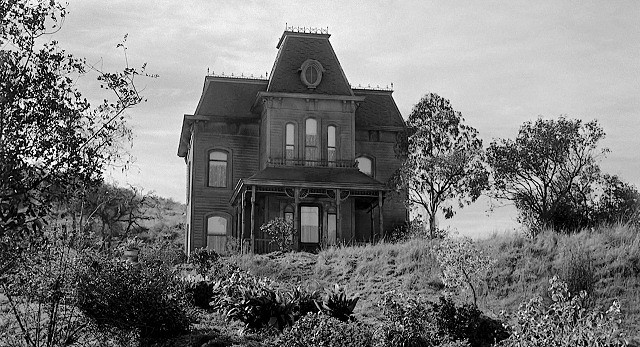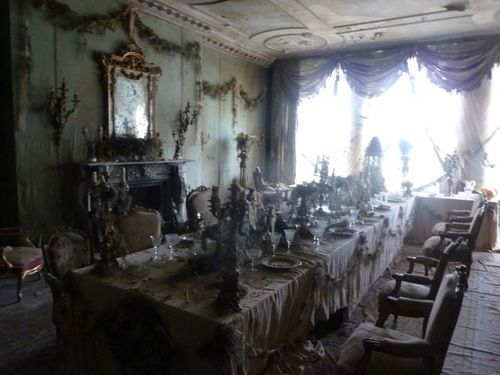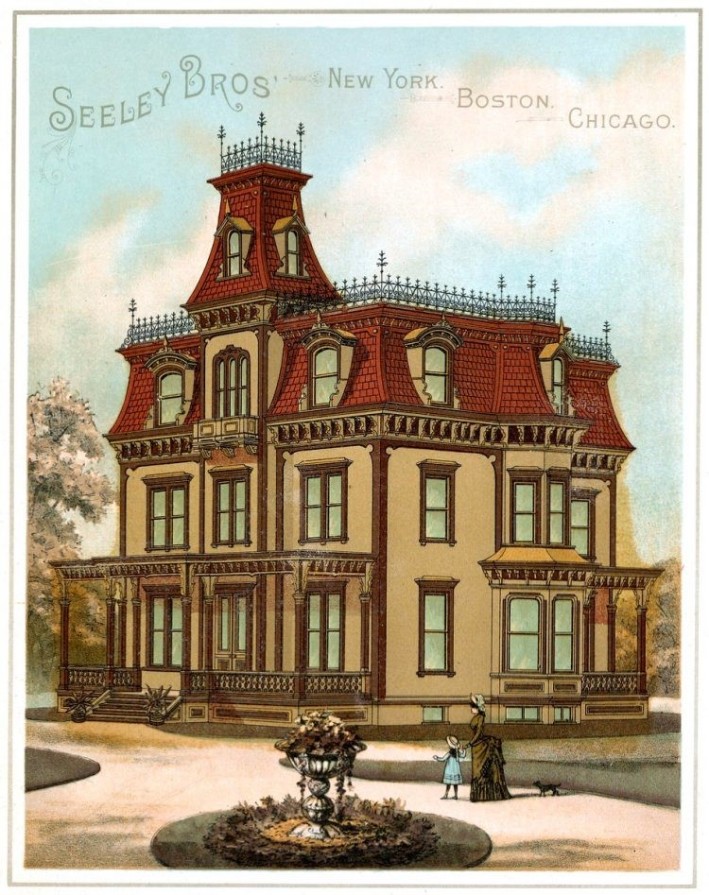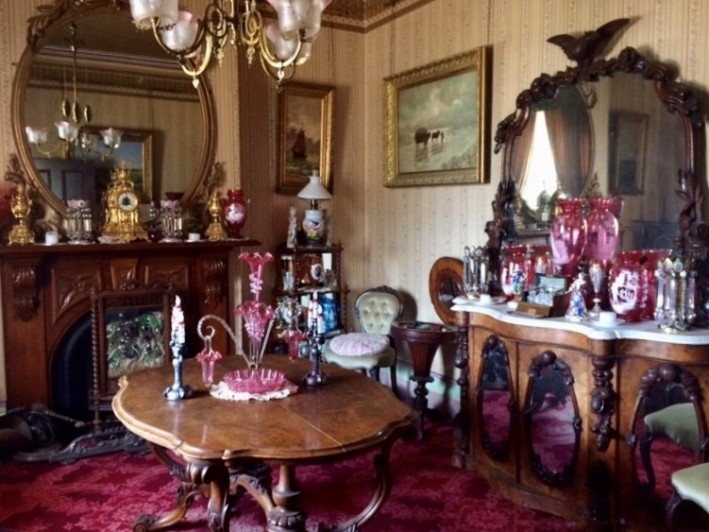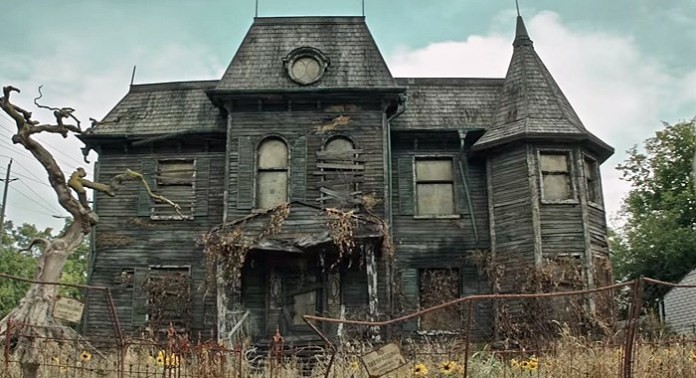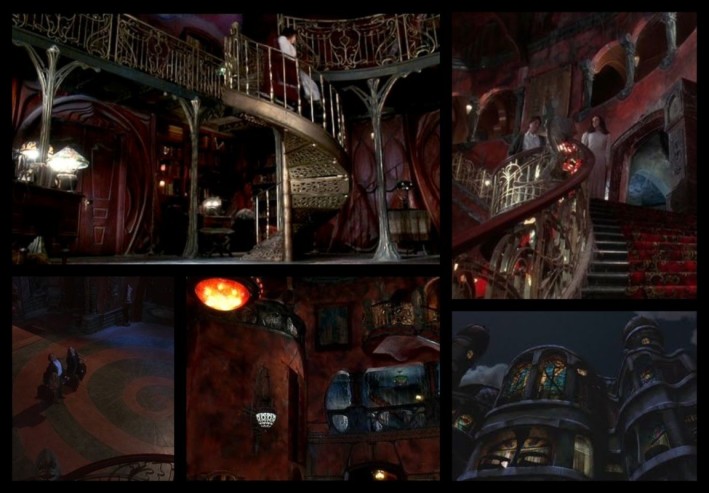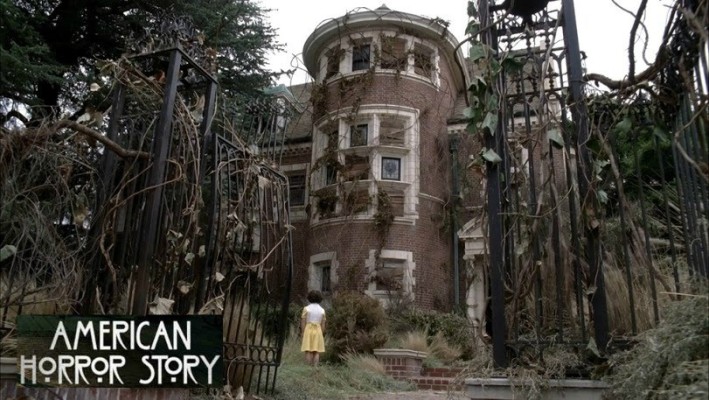Famous haunted houses on screen and why they all look the same
Type ‘haunted house’ into Google and the first 25 or so images show large homes built on sizeable blocks in an elaborate Victorian, usually Gothic Revival architectural style.
Art historian Sarah Burns wrote about the phenomenon for the academic journal American Art back in 2012. “Certainly, there are other sorts of places we associate with ghosts: old world castles, dungeons and crypts, the antebellum big house [eg. Disneyland’s Haunted Mansion], the alleged ‘witch’ houses of seventeenth-century Salem,” she writes. “Yet none so pervades and dominates the haunted visual landscape as the Victorian house does today.”
So how could one architectural period define a whole genre, and how did this come to represent all haunted houses on screen? Well, it’s a mixture of historical context, the psychological impact of an architectural style and the growing eminence of cinema in the early 20th century. Let’s look at these three themes in detail.
The historical context of Victorian mansions
In 1861 Queen Victoria’s husband, Prince Albert, died. His death was to usher in a new fascination with mortality and mourning, one that hadn’t been seen since the last vestiges of religious vanitas in the 17th century. And death was as apparent in the new horrors of machines and the frontiers of Empire, as it was in the home. People died in their houses and were laid out for all to see, surrounded by ornate mementoes. The link between death, decay and the Victorian house was being developed.
In an age where mourning was something of an art and a social tradition, Queen Victoria took it to a new level. She wore black for decades, and her obsession with Albert’s death morphed into a trend. Many emulated her in terms of dress, adornment, deportment and with their furnishings. Some of the architectural features that we find in Victorian houses, derived from this fascination. Victorian homes would often be decorated with funerary urns, gargoyles and depictions of Medusa. When Dicken’s wrote of the ghostly Miss Havisham surrounded by her putrefying wedding banquet in his 1860 novel Great Expectations, he was actually inspired by the accounts of a real woman’s home from Sydney.
Other authors are soon to follow in Dicken’s footsteps. A new Gothic genre is invented, largely based on tales of gruesome murders in the night [e.g. Dracula], or innocent women lured to mysterious old estates in the remote countryside of England [e.g. Jane Eyre]. All of these novels conjured up a romance for the Gothic setting amongst the masses.
The later part of the Victorian period is also named the Gilded Age in America (1870-1900). This Age followed the American Civil War and was simultaneously an era of political corruption, inequality and industrialisation that helped create a new wealthy class. The choice home for these Nouveau Riche (newly rich) was that of an oversized, mainly Gothic-inspired, Victorian mansion. It was the McMansion of its time, a gaudy and unbalanced monstrosity that was intended to show off the wealth of these American families. These homes were designed to be imposing and make a statement. This was all about Nouveau Riche Americans trying to emulate Europe and be taken as serious contenders on the world stage.
The psychology of creepy architecture
The Victorian mansions were a mismatched conglomerate of towers, turrets, ironwork, ornate gingerbread trim and sloped bloated roofs called the Mansard roof, which drew from French Imperial styles. A lot of these features required heavy maintenance, without which they would rust or slip out of place over time.
These oversized homes also had details which psychologically play on our fears. For instance, many of the large doors, windows and trim are long and vertical. Architects, like leading American architect Jonathan Moore, state that the disproportionate ratios remind us of a human face - one “with an open mouth and wide eyes”. This is linked in our minds to that of a screaming mouth and subconsciously instils fear.
The houses were built in high prominent places, such as hills, in order to be seen and displayed to other townsfolk. But this also had the effect of being removed from the community and seemingly aloof. The large estates and high viewpoints would serve to highlight each house’s expensive upkeep, or later their lack of. This remoteness, and darkness, build on what evolutionary psychologists call our ‘agent detection mechanisms’. Hence, we subconsciously dread that it might be some time to escape from such a place should the need arise.
Inside the Gothic manor was a maze of rooms for all kinds of functions, including parlours, libraries, observatories and drawing rooms, often unused with the curtains drawn to preserve the rich ornate fabrics. Frequently these furnishings favoured dark colours to mask the dust and cobwebs which accumulated due to their difficulty to access. Industrialisation also made previously expensive and rare ornaments cheaper to acquire, such as black, dark red and dark green dyes, lace and velvet which feature in any Victorian interior. And the labyrinth of rooms also made it easier to get lost or more difficult to find a way out.
The other thing about Victorian mansions is that they are primarily made of wood. Wood is more susceptible to weather and temperature changes, warping the homes over time, and adding to ominous creaks and scary noises. We can hear footsteps on wooden floors, more easily than on stone or carpet. Such sounds alarm the primal parts of our brains as we cannot readily assess if they pose a threat or not.
And finally, all the atmospherics are present in a Victorian mansion. Stimuli such as mouldy odours, ornate or historically inspired architecture, wood interiors and old portraits on the wall reinforce an ambiance of great age. If the house is no longer occupied, signs of life suddenly interrupted and frozen in time only amplify the fear factor. The older a place is, the more likely we are to perceive it as haunted because there has been much more time for tragic things to have taken place.
The Golden Age of Cinema – late 1920s-early 1950s
It’s no wonder that the appeal of the Victorian mansion eroded over time. After WWI, Americans and Europeans alike ushered in a period of progress and looked to modern, clean and sleek styles to complement a new future. Simplicity became the anchor of good taste. And the over-decorated, over the top wealthy hoarding of the Victorian Age became a symbol of excessive grotesque. Once even the poor were adding Queen Anne details and bric-a-brac to their own sitting rooms, the wealthy began to see their own surroundings as déclassé, preferring the newer Edwardian, Arts and Crafts and eventually Art Deco styles.
The buildings also were troubling reminders of the more gruesome industrial aspects of an older age and were associated with decay and death. These houses slowly became an unwelcome presence in towns and were abandoned or put up for sale. This happened to a great many Victorian mansions in Melbourne too, and they were demolished without regard or subdivided into schools and boarding houses. The poorer classes moved in, adding to their disagreeability. The fact that they were built without electricity or room for many new modern appliances furthered their undesirability and creepiness.
By the time the Great Depression hit in the 1930s, many of these houses had become damaged and heavily eroded. With no new money coming in to maintain and repair the endless structures, the large estates became overgrown and havens for bats or wildlife, deepening their association with decay.
Enter the mysterious Victorian mansion into pop culture. Throughout the 1920s and 1930s Agatha Christie popularises the murder mystery, often set in an old estate. Artist Edward Hopper paints a series of abandoned Victorian mansions in the 1920s and 1930s, one of which inspires the Bates mansion in Hitchcock’s Psycho. In 1937 Daphne Du Maurier pens her famous novel Rebecca with its bewitching house Manderley. Later Hitchcock adapts it for film in 1940. Charles Addams, cartoonist creator of the Addams Family, begins his popular cartoons in the 1930s. The Addams Family are morbidly entranced by ghouls and mysteriously wealthy. Their house, which first appears in print in 1945, is naturally a Victorian.
With regular attendance to cinema peaking in the 1930s and 1940s, the Golden Age of Cinema coincided with the emergence of the idea that the Victorian mansion was as creepy as houses could get. For Hollywood, the Victorian mansion embodied the average American family whilst simultaneously being removed from it. The owners of these houses were also aging, some relics from the Civil War, others the last vestiges of servitude, their children abandoning the older homes and their remote location for a city life. They provided film with endless characters and storylines to fuel cinematic thrillers. From this point the Victorian mansion and horror had been firmly wedded and visually represented via film throughout America and Europe.
By the time of Hitchcock’s Psycho in 1960, the Victorian was easily established as a place of foreboding. In the trailer Hitchcock even mentions that the Bates Mansion is purposefully “a little more sinister looking, less innocent that the little motel itself”. And when he takes you inside he says, “even in daylight this place still looks a bit sinister”. We didn’t need Hitchcock to tell us this. By then, as it is now, the Victorian mansion was an iconic trope, a visual signal to the audience that a place is not quite right and to fill you with dread. The idea of a Victorian-style haunted house had been cemented.
So which haunted house in film or TV scares you the most? Would a Victorian mansion be your favourite? Here are five of Bunjil Place staff’s favourite haunted houses on the screen and yes, most are Victorian Gothics.
Five favourite haunted houses on screen from Bunjil Place staff:
1. Whipstaff Manor, Caspar (1995) - Amanda Olliek (Plaza Events Officer)
“As a child watching Caspar, I never noticed the magnificent Art Nouveau details in the home. I only remembered the hidden rollercoaster which I always wished I could ride myself.”
2. Murder House, American Horror Story Season 1 (2011) - Wayne Magee (Marketing )
“I think this house is the creepiest one I’ve ever seen, and certainly the best one from all the American Horror Story seasons”
3. The Spellman Residence, Sabrina the Teenage Witch (1996-2000) - Sarah Lyons (Sr Education & Audience Engagement Officer )
“Technically not a horror film/tv show, The Spellman Residence is just spooky enough to be interesting: Sabrina's gothic room, talking photos, a portal to the other realm, and a basement which houses Egyptian sarcophagi and three jailed pirates (amongst other things).”
4. The Addams Family House, The Addams Family (1964-1966) - Angela Barnett (Outdoor Screen Coordinator )
“I loved The Addams Family house, mainly because of the abundance of weird taxidermy, endless spiders' webs and Thing popping up in random places”
5. The Beetlejuice House, Beetlejuice (1988) - Georgia Cribb (Bunjil Place Gallery Director)
“Beetlejuice is one of my all-time favourites for the surreal, madness in that house”.
Let us know your pick on our Facebook page. And if you would like to know more about Hitchcock why not check out our Hitchcock Haunted House Month page, along with details for our Psycho and The Birds watch parties. ?
Article written by Amanda Olliek (Bunjil Place Plaza Staff)
